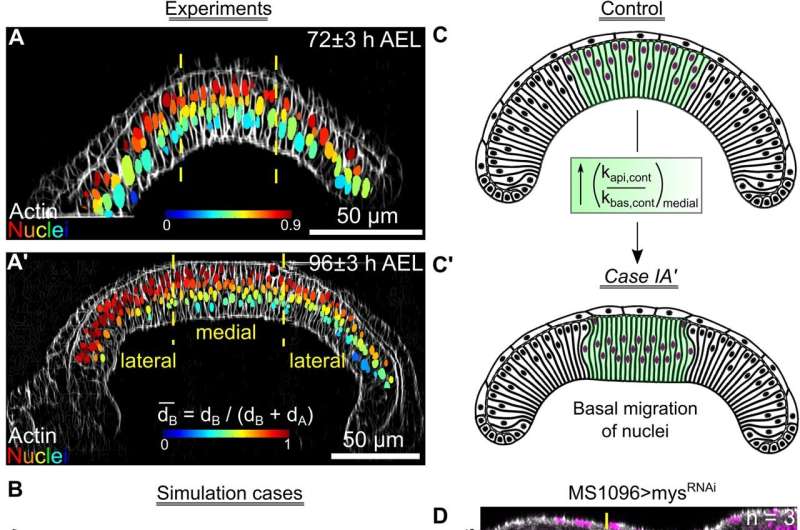This article has been reviewed according to Science X's editorial process and policies. Editors have highlighted the following attributes while ensuring the content's credibility:
fact-checked
peer-reviewed publication
trusted source
proofread
Fruit fly model identifies key regulators behind organ development

A new computational model simulating fruit fly wing development has enabled researchers to identify previously hidden mechanisms behind organ generation.
Because organs develop in remarkably similar ways in fruit flies and people, biological insights from this model can be used to inform the diagnosis and treatment of human diseases such as cancer, Alzheimer's and congenital genetic birth defects.
Jeremiah Zartman, associate professor of chemical and biomolecular engineering at the University of Notre Dame, worked with a multidisciplinary research team that included collaborators from the University of California, Riverside to develop a fruit fly model to reverse engineer the mechanisms that generate organ tissue.
The team's findings, which offer a deeper understanding of the chemical and mechanical levers regulating organ cell size and shape, have been published in Nature Communications.
"We're trying to simulate an organ in the computer—effectively creating a digital twin of that organ," Zartman said. "We're taking the different cells and parts of cells to see if we can predict how they will interact with each other."
Organs develop in response to what Zartman calls a "symphony" of signals. The researchers' fruit fly model integrates the numerous signals that orchestrate cell movement, contraction, adhesion and proliferation. It also incorporates the mechanical, chemical and structural properties of cell components and accounts for how these properties change over time and in different locations.
Both the model and his lab's experimental results showed that there were two distinct classes of chemical signaling pathways, or sequences of signals, that produce either curved or flat tissues—identifying the flexibility and tunability of generating an organ of a specified shape.
Cells receiving signals from insulin led to an increase in the curvature of the tissue, while cells receiving inputs from two other key growth regulators flattened tissue. The researchers discovered that these growth regulators also manipulated the cell's internal framework, or cytoskeleton, to further sculpt cell size and shape.
The Zartman group's big-picture goal is to identify the extent to which the biological rules gleaned from simulated fly organ studies are shared with systems as distinct as plants, fish and humans.
"Our goal for the future is to develop a digital prototype organ that tackles a fundamental question in biology—how do cells generate functional organs?" Zartman said.
More information: Nilay Kumar et al, Balancing competing effects of tissue growth and cytoskeletal regulation during Drosophila wing disc development, Nature Communications (2024). DOI: 10.1038/s41467-024-46698-7
Journal information: Nature Communications
Provided by University of Notre Dame





















